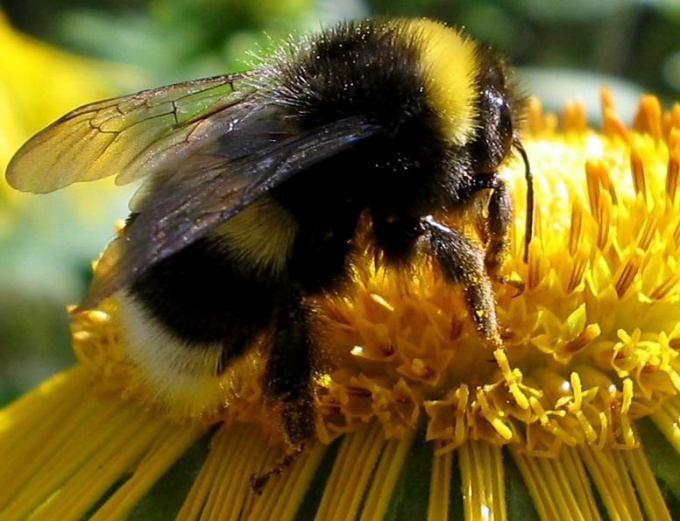In the past these dangerous enemies, there is another troublemaker of the pack - ant, although the size of his much less. Colonies they destroy the larvae found in the nests of bumblebees.
Bees, like their relatives, bees and wasps are collecting nectar from plants while pollinating them, and produce honey, which they feed their offspring. But unlike bees, they harvest honey in store for winter, since the population of bees is dying, and winter is possible only to a young bumblebee uterus.
Bumble bees are beneficial insects, their complex and interesting life deserves to have people know about it a little more.
A nest of bumblebees
After awakening from its winter sleep, the female bumblebee is looking for a place to nest. For this purpose, can be a good approach abandoned mouse hole, a squirrel hole, etc the Main requirement for future living space – its closeness from drafts and isolation. This is necessary to maintain certain temperature conditions for rearing.
First and foremost, the uterus cleans found the lair from all unnecessary and redundant. Then lines the bottom with small grass, moss and feathers, creating the conditions for a first clutch. By the end of the construction of the nest takes on a rounded shape with jagged edges. Each of the formed cells is rebuilt after twice use.
Rearing
The process of nest-building goes on continuously all summer. At the time, as in the first cell filled with nectar and honey, are developing already hatched larvae in the uterus following only lays eggs. And so on without end.
Usually plugged in the power cell, only enough for the growth of the larva, and for the formation of the pupa of silky threads need an additional supply of nectar and honey. When growing the first batch of offspring this function is performed by the uterus of the bumblebee alone. Later helping her "older children".
Unlike wasps and bees that store honey reserves built in wax comb, the bees as cameras storage use their deserted after the release of the juveniles, cocoons.
The average family of bees consists of about 300 individuals by the end of summer. Larger nests are very rare.
